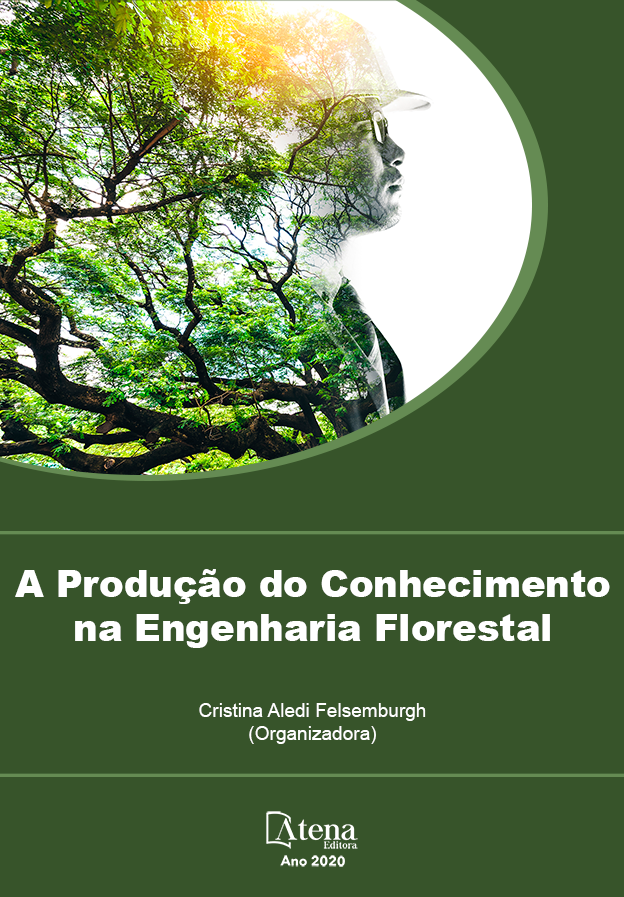
IMPLANTAÇÃO DE UM CONSÓRCIO FLORESTAL EM PEQUENAS PROPRIEDADES NO SUL DO ESPÍRITO SANTO: UM CAMINHO PARA O ZONEAMENTO AMBIENTAL
O cultivo de café e a criação de gado são as principais formas de utilização da terra na zona rural, no estado do Espírito Santo. Isto reduz a possibilidade de produtores diversificarem a renda, além de utilizar terras que estão inadequadas para outros cultivos, melhorando também a proteção do solo. O objetivo deste trabalho foi implantar um estudo de espécies florestais em consórcio numa propriedade no município de Jerônimo Monteiro, região sul do Espírito Santo. O zoneamento ambiental da área foi realizado para gerar mapa de uso do solo, e avaliar a adaptabilidade das espécies e clones escolhidos as condições da propriedade. O solo foi coletado em quatro profundidades (0-5 cm, 5-10 cm, 10-20 cm e 20-40 cm). Os modelos implantados foram eucalipto com a finalidade de energia, espaçamento 2x2 m2, eucalipto para celulose, espaçamento 3x3 m2, e eucalipto com mogno (Khaya ivorensis e Khaya. senegalensis), espaçamento 3x3 m². A altura, diâmetro e a taxa de sobrevivência foram mensurados aos 67 dias após o plantio. As espécies estudadas estão aptas ao plantio na área de estudo, com exceção do Eucalyptus grandis. A avaliação química do solo indicou alta acidez (valores de pH abaixo de 5,4) e baixa disponibilidade de nutrientes, sendo que as melhores características químicas do solo foram na área com plantio de eucalipto com mogno africano (Khaya ivorensis e Khaya senegalensis), onde anteriormente haviam alguns remanescentes de eucalipto oriundos de um plantio vizinho. A sobrevivência das mudas foi considerada alta, mas o crescimento em altura e diâmetro não teve diferenças significativas entre os modelos de plantio.
IMPLANTAÇÃO DE UM CONSÓRCIO FLORESTAL EM PEQUENAS PROPRIEDADES NO SUL DO ESPÍRITO SANTO: UM CAMINHO PARA O ZONEAMENTO AMBIENTAL
-
DOI: 10.22533/at.ed.00620261019
-
Palavras-chave: Silvicultura, uso do solo, modelos de produção
-
Keywords: Silviculture, land use, production models
-
Abstract:
The state of Espírito Santo has coffee cultivation and cattle ranching as its main forms of land use in rural areas, throughout practically its entire territory. This reduces the possibility for producers to diversify their income, in addition to using land that is unsuitable for other crops, also improving soil protection. Thus, this work aims to implement a study of forest species in consortium on a property in the municipality of Jerônimo Monteiro, in the southern region of Espírito Santo. First, the environmental zoning of the area was carried out, to generate a land use map, in order to assess the adaptability of the chosen species and clones to the conditions of the property. After a soil collection was performed at four depths (0-5 cm, 5-10 cm, 10-20 cm and 20-40 cm), for further analysis. Three models were implemented, the first eucalyptus for energy purposes, with a 2x2 m spacing, the second eucalyptus for cellulose, with 3x3 m spacing, and the third eucalyptus with mahogany (Khaya ivorensis and K. senegalensis), 3x3 m spacing. Height and diameter were measured at 67 days after planting, in addition to the survival rate. As a result, it was possible to observe, through environmental zoning, that with the exception of Eucalyptus grandis, all other species studied are able to be planted in the study area. The chemical evaluation of the soil indicated high acidity (pH values below 5.4) and low availability of nutrients, and the best chemical characteristics of the soil were observed in the area planted with eucalyptus with African mahogany (Khaya ivorensis and Khaya senegalensis) , where previously there were some eucalyptus remnants from a neighboring plantation. Seedlings survival was considered high, but the growth in height and diameter did not have significant differences between the planting models.
-
Número de páginas: 15
- Elzimar de Oliveira Gonçalves
- Marcos Vinicius Winckler Caldeira
- Kelly Nery Bighi
- Wiane Meloni Silva
- Lomanto Zogaib Neves


